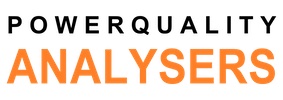Article sections
Reactive power is one of the components of nonactive power N. In one-phase systems with sinusoidal voltage and current waveforms, N equals Q; hence the nonactive power does not have any other components. In three-phase systems, this is true only for symmetrical sinusoidal systems with a balanced purely resistive load. Reactive power Q appears when there is a phase shift between the voltage and current harmonics. An unbalanced three-phase resistive load results in the power factor being less than one. Such a load does not have the reactive power Q, and the results from the power triangle S, P, Q are totally different. An attempt to connect the IEEE 1459-2000 standard with the Czarnecki’s power theory leads to the conclusion that nonactive power conceals at least three separate physical phenomena which influence the reduced effectiveness of energy transmission and therefore shows a reduction in the power factor. Reactive power known as Q has been limited to the fundamental component, for both one-phase and three-phase systems.
In three-phase systems, only the positive sequence harmonic components are taken into consideration. Correct measurement of this power requires the same phase rotation sequence (i.e. phase L2 delayed by 120 degrees in relation to L1, phase L3 delayed by 240 degrees in relation to L1).
